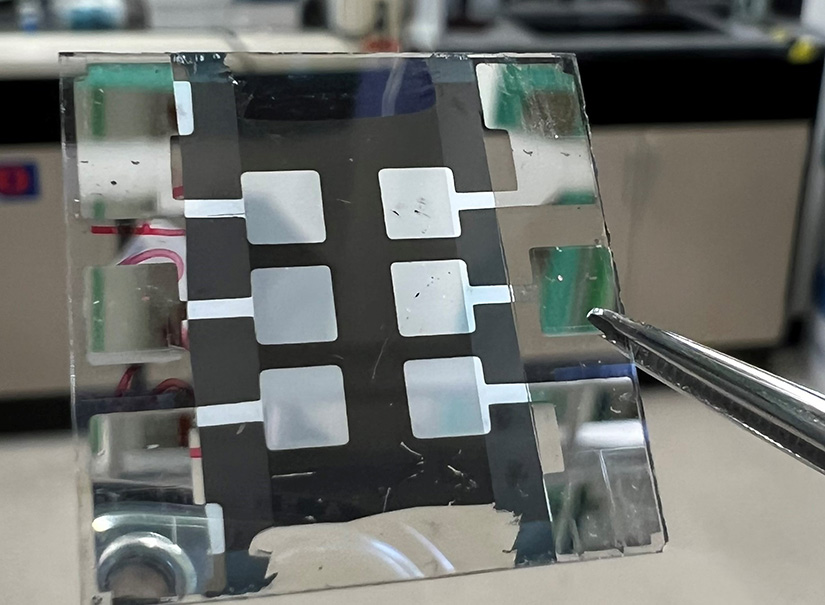From pv magazine USA
Researchers from the US National Renewable Energy Laboratory (NREL) have achieved breakthrough levels of stability and efficiency with a new perovskite solar cell, according to results published in Nature. The project was conducted in partnership with University of Colorado, Boulder, and the University of California, San Diego.
A new architectural structure enabled the perovskite solar cell to demonstrate a certified 24% efficiency level, while retaining 87% of its original output capability after 2,400 hours of operation at 55 C.
Perovskites are defined by their crystalline structure. They are actively being researched throughout the world for their ability to be manufactured at scale as readily printable materials that can be deposited as paper-thin solar cells.
The flexible, lightweight cells are hailed for their numerous uses, like on low-load roofs, in aviation, wearables, and rapid delivery and rollout in disaster situations. Perovskites are naturally occurring minerals, but they also represent lab-made crystalline structured materials that imitate the natural minerals’ shape.
Perovskites have made leaps and bounds in their efficiency. However, the material currently struggles with stability, in part because temperature sensitivity causes them to degrade relatively rapidly. The earliest perovskites worked for only a few minutes or hours, but today they have a lifespan of several months.
Popular content
The NREL research project employed the use of an “inverted” architecture, rather than the latest architecture that has unlocked record efficiencies. The inverted structure is achieved by using a different layering technique in the glass substrate the perovskite crystals are deposited into.
The team also made use of a new molecule on the surface of the perovskite, 3-(Aminomethyl) pyridine (3-APy). The molecule reacted to the formamidinium within the perovskite to create an electric field on the surface of the perovskite layer.
“That suddenly gave us a huge boost of not only efficiency but also stability,” said Kai Zhu, a senior scientist at NREL.
The newly introduced molecule boosted efficiency from under 23% to over 25%. Zhu described the results as “state-of-the-art levels of efficiency and operational reliability.”
The project was funded by the Center for Hybrid Organic-Inorganic Semiconductors for Energy (CHOISE), an Energy Frontier Research Center within DOE’s Office of Basic Energy Sciences, and from the DOE’s Solar Energy Technologies Office (SETO).
This content is protected by copyright and may not be reused. If you want to cooperate with us and would like to reuse some of our content, please contact: editors@pv-magazine.com.



By submitting this form you agree to pv magazine using your data for the purposes of publishing your comment.
Your personal data will only be disclosed or otherwise transmitted to third parties for the purposes of spam filtering or if this is necessary for technical maintenance of the website. Any other transfer to third parties will not take place unless this is justified on the basis of applicable data protection regulations or if pv magazine is legally obliged to do so.
You may revoke this consent at any time with effect for the future, in which case your personal data will be deleted immediately. Otherwise, your data will be deleted if pv magazine has processed your request or the purpose of data storage is fulfilled.
Further information on data privacy can be found in our Data Protection Policy.